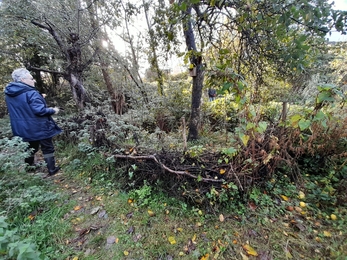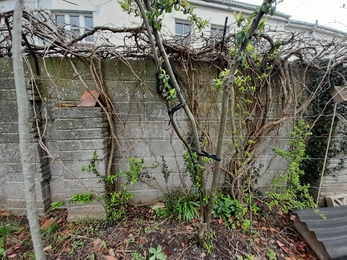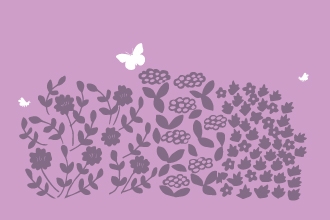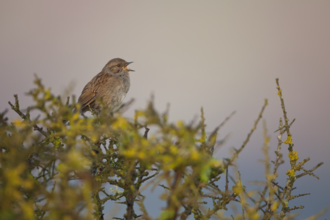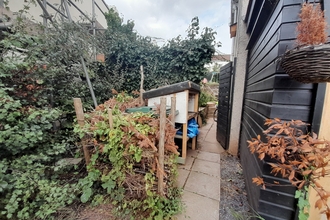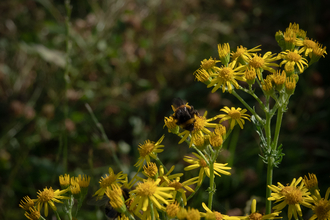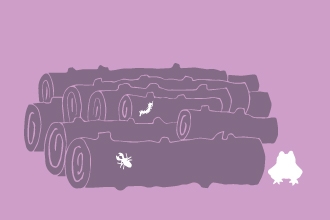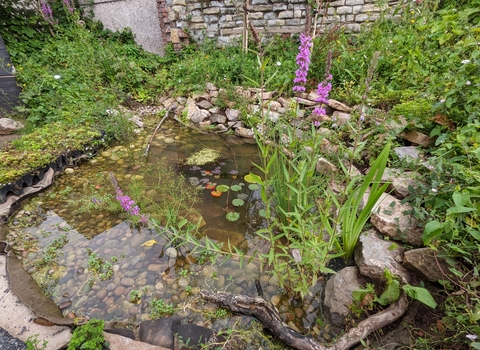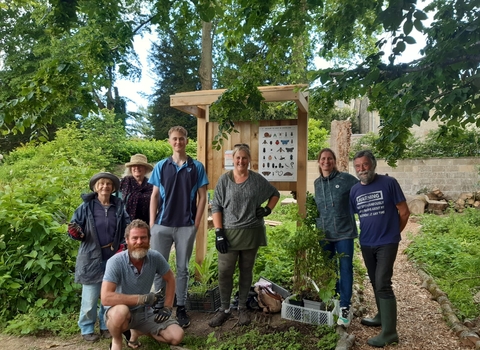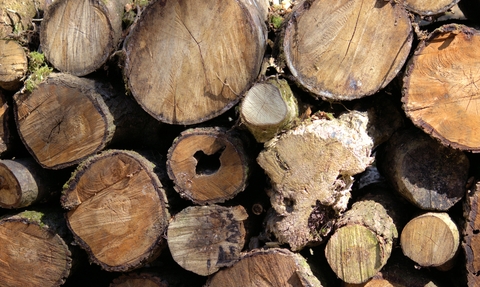
Lauren Heather
Natural Barriers, Dead Hedges & Native Hedges
Creating Natural Barriers and Dead Hedges
Natural barriers in gardens and open spaces exist to section off, organise and tidy areas. Natural borders and barriers such as dead hedges, native hedges and willow or hazel barriers are prime examples that are sustainable, blend in with the natural environment, use materials on site and are wildlife friendly.
They create important habitats for beetles, hedgehogs, birds and small mammals, providing food, shelter and breeding space, which walls and fences do not (unless climbers are added for example). Hedges also allow wildlife to move freely between gardens and open spaces.
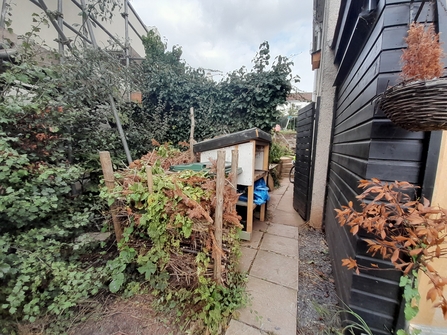
wild_garden_revival
A dead hedge is easy to create and uses existing garden waste on an ongoing basis. They're a sustainable option in various locations at home and in the community.
ADVICE: Add support branches or poles/wooden garden stakes to build the hedge walls. Add trimmings and branches over time, old Christmas trees are a great addition to a dead hedge. Notice what wildlife this attracts and supports.
A dead hedge or log pile is particularly effective near a pond, giving frogs and other pond creatures a place to shelter when out of the water.
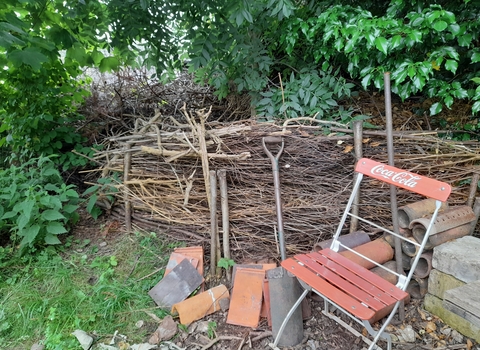
Blooming Whiteway
Benefits of Dead Hedges
Garden waste materials are used
Bins are covered up
Natural barriers are created to section of areas
A bug hotel is created
Suitable for outdoor space: gardens, driveways, allotments, community green spaces
Wildlife is supported: bugs, small mammals including hedgehogs, birds.
The ongoing project 'feeds' from new garden waste materials. More branches are added on a regular basis.
Allotment Windbreaks & Natural Barriers
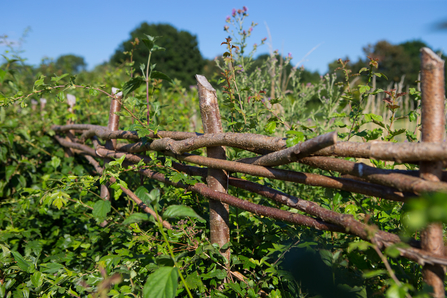
Jon Hawkins
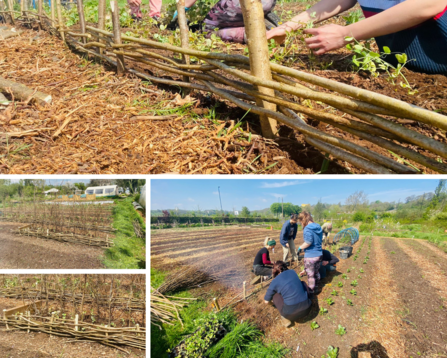
Hazel windbreaks & barriers
Windbreaks at your allotment or vegetable patch can be made out of natural materials, which look the part and are sustainable. Geoff from Tree to Treen, a land partner at Grow Wilder, taught the Land management volunteers how to make a windbreak for their pea plants. The barriers are made from Hazel, coppiced from another Avon Wildlife Trust site. Hazel was also used as 'pea sticks' for the plants to climb up as they grow.
The Friends of Emersons Green Park have also created some beautiful hazel natural barriers.
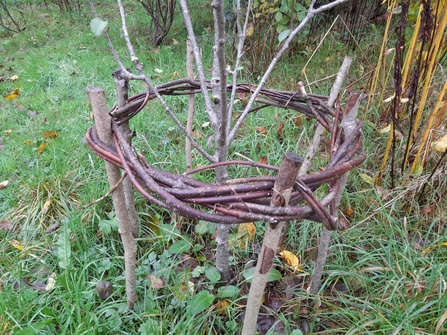
Sophie Bancroft
Natural Barriers at Grow Wilder
At Grow Wilder, wicker tunnels are used to screen off a hidden pond and other areas, plus logs are used a lot for barriers/walls and of course they also double up as bug hotels.
Native Hedges
Choosing hedges instead of fences or walls in your garden or open spaces reap many benefits for people and wildlife. Hedges provide living space, shelter and food for wildlife - offering leaves, nectar-rich flowers, berries, fruit, seeds and insects. They also allow movement of small animals, like hedgehogs.
Benefits of choosing hedges over fences include budget, as it is cheaper to grow a hedge than install a fence, hedges absorb noise from roads and soften effects from the wind, they look natural and beautiful and are full of life, changing throughout the seasons.
How to choose a native hedge & maintenance advice
A native hedgerow could be grown to replace conifer trees for example. Advice on hedgerows from the Team Wilder Community Ecologist:
- Native hedgerow species, such as hawthorn, hazel, field maple, hornbeam, dogwood, guelder rose or holly, could be planted along the south boundary.
- Hedgerow species can be purchased from the suppliers below, either individually or as a pack.
- There is a useful guide here that details how to create a hedgerow and what the process involves.
- A wildflower mix for hedgerows can be sown alongside the hedgerow to add diversity or the grass can be let to grow long.
Natural Borders in the Community
Friends of Emersons Green Park have worked on many projects to benefit both people and wildlife. Some impressive examples are shown below of community created and managed natural borders - dead hedges, beautiful hazel and willow borders, including a willow den located next to the children's playpark, encouraging the next generation of nature lovers and nature protectors.
Friends Of Emersons Green Park
Thornbury Orchard Group. Having an orchard means that there are many opportunities to create amazing dead hedges - not only getting rid of trimmings and pruning on site, looking aesthetically pleasing and in-keeping with the natural soundings, but also creating a haven for bugs, supporting local wildlife. Dead hedges can tidy up an area, making walkways more clear and accessible, plus section of other areas. The dead hedge is useful to define where they cut brambles back to, acting as safety barrier between visitors to the orchard and the stream. The Thornbury Orchard team of friendly, knowledgeable and dedicated volunteers have some excellent examples of managing a site for people and wildlife.
Resources
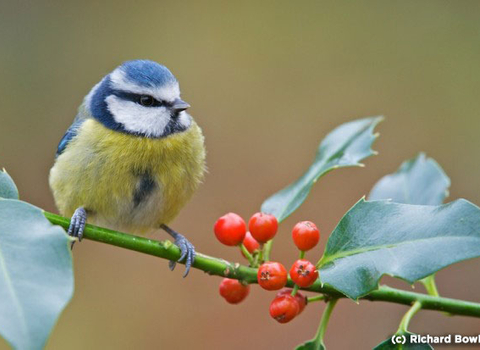
(c) Richard Bowler
Be part of Team Wilder
All actions for nature collectively add up and creates life for people and wildlife.
Share your actions for nature, like Tom by sharing and tagging @avonwt on social media and
Log your actions for nature on the map







